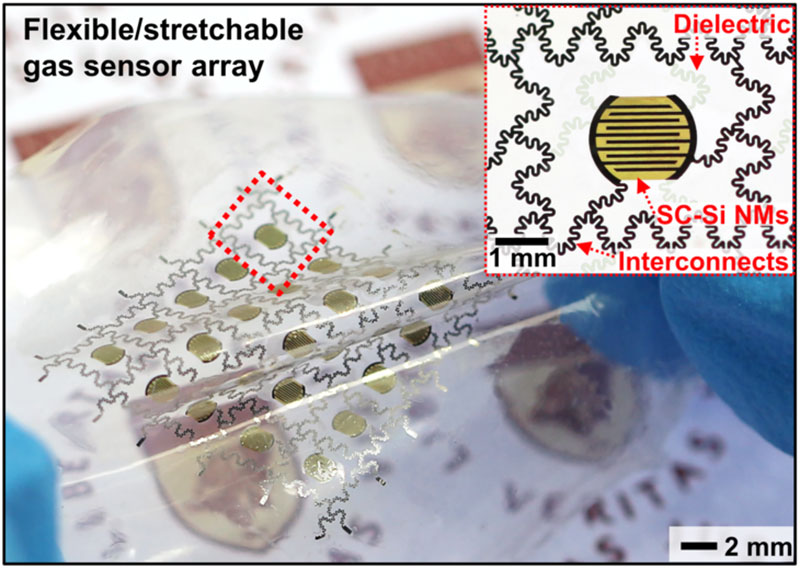Researchers at Penn State have developed a highly sensitive flexible gas sensor that can be implanted in the body — and, after it’s no longer needed, safely biodegrade into materials that are absorbed by the body.
Read more Penn State Engineers Print Sensors Directly On Human Skin Without Using Heat
The team reported their findings in NPG Asia Materials.
Monitoring various forms of nitric oxide (NO) and nitrogen dioxide (NO2) gas is important because these gases can significantly impact human health. However, exposure to NO2 from the environment is linked to the progression of conditions such as chronic obstructive pulmonary disease, reports Matt Swayne in Penn State News. The conventional method uses devices outside of the body to monitor gas levels, but they aren’t as accurate and the patients have to go through another surgery to remove these implantable devices.
All the components in the new sensor are biodegradable in water or in bodily fluids, but remain functional enough to capture the information on the gas levels. The researchers made the device’s conductors out of magnesium, and for the functional materials, they used silicon, which is also highly sensitive to nitric oxide. The body can safely absorb all of the materials used in the device.
“Silicon is unique — it’s the building block for modern electronics and people consider it to be super-stable,” said Huanyu “Larry” Cheng, Dorothy Quiggle Career Development Professor in the Department of Engineering Science and Mechanics and an affiliate of the Institute for Computational and Data Sciences. “Silicon has been shown to be biodegradable, as well. It can dissolve in a really slow manner, at about one to two nanometers a day, depending on the environment.”

The researchers tested their sensor in humid conditions and aqueous solutions to see if it could stably perform in the harsh conditions of the body.
The team used computational resources of ICDS’s Roar supercomputer to create the computer simulations that can calculate extremely small changes caused by slight changes of shape, or deformations, of the material.
“We base the measurement on resistance, which can change based on the gas absorption, but it can also be changed due to the deformation,” said Cheng. “So, if we deform the sensor on the skin surface, that will cause a large force and a large change in resistance and we would have no idea whether the gas’ performance is from the deformation or the exposed environment.”
Read more This Wearable Gas Sensor is Meant for Monitoring Health and Environment
In the future, the team plans to design integrated systems that could monitor other bodily functions for healthy aging and various disease applications.












